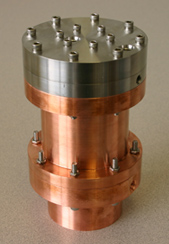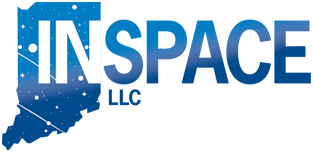Propulsion System Design
 Whether you need assistance with the design of a test article demonstrating a new propulsion technology or a knowledgeable workforce to develop a complete prototype engine design for an application, IN Space can help.
Whether you need assistance with the design of a test article demonstrating a new propulsion technology or a knowledgeable workforce to develop a complete prototype engine design for an application, IN Space can help.
Our engineers have considerable expertise in the entire design of rocket propulsion systems. From monopropellant and bipropellant engines to hybrid motors, IN Space personnel have made significant contributions to systems ranging from laboratory-scale proof-of-concept devices, to 1,000 pound-thrust units intended to fly on NASA Dryden flight experiments, to 10,000 pound-thrust upper stage engines, all the way to the Beal Aerospace second stage engine that produced over 800,000 pounds of thrust.
LRE Injectors
To meet a wide variety of mission requirements and vehicle constraints, IN Space draws upon a broad liquid rocket injector design capability which includes impinging jets (doublet to pentad), pintles, bi-centrifugal coaxial swirl, splash plates, and transverse injectors. When challenging technical and program requirements conflict, we create innovative injector designs to meet the customer’s needs. Above all, we focus on designing liquid rocket injectors that achieve:
- Stable and highly efficient combustion
- Low engine weight
- Low development and fabrication costs
- High system reliability
- Thrust Chambers
IN Space can develop thrust chamber designs ranging from highly instrumented, modular workhorse test articles to monolithic prototype thrust chambers. Various tools, such as FEA programs, the Two-Dimensional Kinetic (TDK) code, and IN Space’s extensive material database, are used to aid in the design process.
Feed Systems
Our engineers can design and analyze pressure-fed propellant feed systems and non-turbomachinery components of pump-fed propellant feed systems for a variety of combustion cycles. We use both in-house and the industry-standard ROCETS programs to simulate transient and steady state behavior in liquid and hybrid rocket feed systems. Both analytical and FEA tools are employed to design and analyze feed lines, flow paths and associated components.
Propellants
IN Space personnel have extensive experience working with both traditional and advanced propellants including:
- Oxygen (liquid and gaseous)
- Hydrogen Peroxide
- Nitrogen Tetroxide (NTO)
- AFRL Monopropellants
- Nitrous Oxide
- Gaseous Hydrogen
- Hydrocarbon Fuels
- Catalyzed Hydrocarbon Fuels
- Hydrazine-based fuels
- DMAZ
- AFRL Ionic Liquid Fuels
- HTBP

